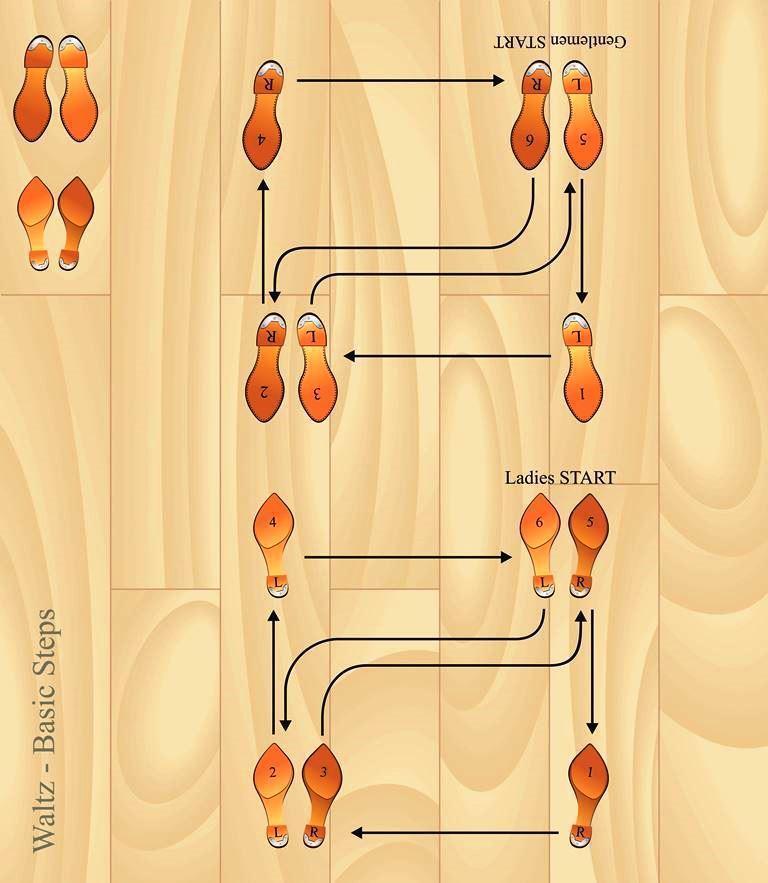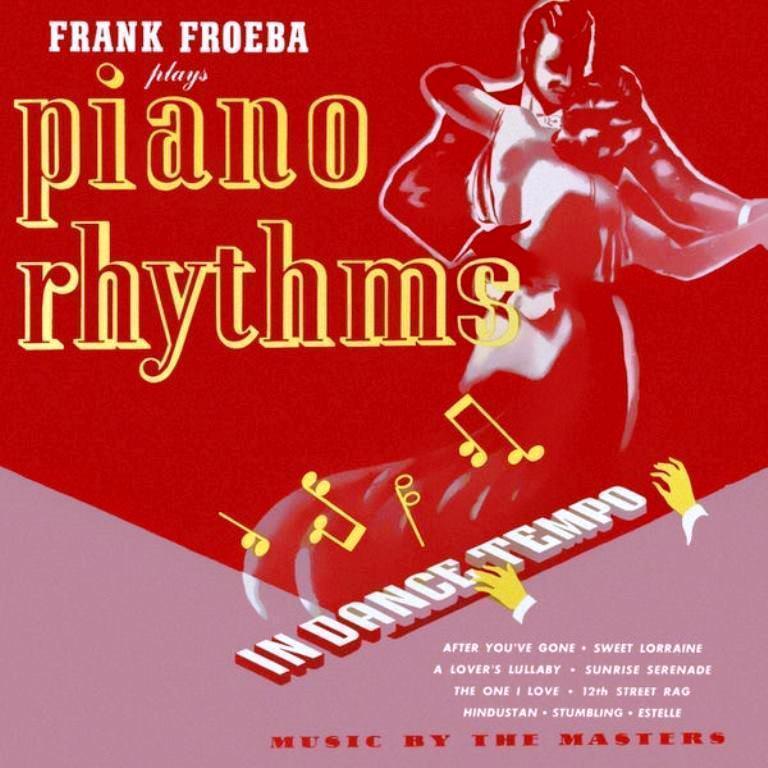
1. Introduction: Exploring the importance of tempo and timing in ballroom dance music
Introduction: Exploring the Importance of Tempo and Timing in Ballroom Dance Music
The rhythm of ballroom dance music is an essential element of the art form. The tempo and timing of the music create the structure and framework for the dance, allowing the dancers to interpret and express the music through their movements. The music also helps to set the mood and atmosphere of the performance.
The tempo of a piece of music is the speed at which it is played, while the timing is the way in which the beats are arranged. A piece of music can be fast or slow, but the timing is what gives it its unique character. In ballroom dance music, the tempo and timing can be used to convey different emotions and create different types of energy.
The Impact of Rhythm in Ballroom Dance Music
The rhythm of the music is what drives the dancers to move in the way they do. It is the rhythm that propels the dancers forward and helps them to keep their steps in time with the music. The rhythm also helps to create an emotional connection between the dancers and the music, as the dancers will often move in time with the music.
The tempo and timing of the music can also affect the way that the dancers interpret the music. A slower tempo or a different timing can create a different feel to the dance, while a faster tempo or a different timing can create a more energetic feel.
The tempo and timing of the music can also affect the way that the audience perceives the performance. A slower tempo or a different timing can create an atmosphere of calm and relaxation, while a faster tempo or a different timing can create an atmosphere of excitement and energy.
In conclusion, the tempo and timing of the music are essential elements of ballroom dance music, and they have a profound effect on the way that the dancers interpret and express the music and the way that the audience perceives the performance.
2. Defining Tempo and Timing
Defining Tempo and Timing
Tempo is the speed of a piece of music, and is usually measured in beats per minute (bpm). It is the rate at which the music moves, and is the foundation for the rhythm of the dance. It is important to understand the tempo of the music before attempting to dance to it.
Timing refers to the placement of steps within the music. It is the way the dancer interprezes the rhythm of the music and uses it to create an aesthetically pleasing and dynamic performance.
The Impact of Tempo
The tempo of a piece of music affects the way it is danced. It can influence the speed of the steps, the energy of the performance, and the overall character of the dance. Faster tempos tend to create a more energetic and dynamic performance, while slower tempos can create a more graceful and elegant effect.
The Impact of Timing
The timing of the steps is a key factor in creating a successful performance. It is important to understand the rhythm of the music and be able to place the steps in the correct place within the music. This allows the dancer to create a performance that is in time with the music, and that is aesthetically pleasing. It is also important to be able to adjust the timing of the steps in order to create different effects. For example, a dancer may choose to delay a step to create a dramatic effect, or to speed up a step to create a sense of urgency.
3. Examining the Different Types of Ballroom Dance Music
Examining the Different Types of Ballroom Dance Music
Latin American Music
Latin American music is a broad genre that encompasses a variety of styles and rhythms. It includes the traditional styles of cha-cha, rumba, samba, and mambo, as well as more modern styles such as reggaeton and salsa. Latin American music is characterized by its syncopated rhythms, which are often slower than other types of dance music and can be quite challenging to dance to.
Ballroom Music
Ballroom music is a style of dance music that originated in Europe. It typically features a waltz tempo, with a 4/4 time signature and a moderate tempo. Ballroom music is often used in competitions and is characterized by its elegance and sophistication.
Swing Music
Swing music is a style of dance music that originated in the United States. It is characterized by its up-tempo rhythms, which are often faster than other types of dance music. Swing music is often used in social dances and competitions, and is characterized by its energetic feel and high levels of energy.
Pop Music
Pop music is a style of dance music that has become popular in recent years. It is characterized by its catchy melodies and upbeat rhythms, and is often used in competitions and social dances. Pop music is often used to add variety to a dance routine and to make it more interesting.
4. Exploring the Impact of Tempo and Timing on the Dance Floor
Exploring the Impact of Tempo and Timing on the Dance Floor
What is Tempo?
Tempo is the speed of a piece of music, and is usually measured in beats per minute (BPM). The tempo of a piece of music determines how quickly or slowly a dancer will move. Different dance styles have different tempos, and the tempo of a piece of music can also be varied throughout the song.
What is Timing?
Timing is the relationship between the dancer and the music. It is the ability to maintain the correct rhythm and phrasing of the music. Good timing is essential in ballroom dancing, as it allows the dancer to move in harmony with the music.
The Impact of Tempo and Timing on the Dance Floor
The tempo and timing of a piece of music can have a major impact on the way a dancer moves. A fast tempo can make a dancer feel rushed and can make it difficult to maintain the correct timing. A slow tempo can make a dancer feel sluggish and can make it difficult to maintain the correct phrasing.
The tempo and timing of a piece of music can also affect the way a dancer interacts with their partner. A fast tempo can make it difficult for partners to stay in sync, while a slow tempo can make it difficult for partners to stay connected.
Conclusion
Tempo and timing are essential elements of ballroom dance music. A dancer’s ability to maintain the correct rhythm and phrasing of the music is essential for a successful performance. The tempo and timing of a piece of music can have a major impact on the way a dancer moves and interacts with their partner.
5. Analyzing the Relationship Between Dance Music and Dance Steps
Analyzing the Relationship Between Dance Music and Dance Steps
The Role of Tempo
The tempo of a dance is the speed at which the music is played. In ballroom dancing, the tempo is usually measured in beats per minute (BPM). The tempo of a given dance will determine the speed and complexity of the steps that can be danced to it. Generally, a slower tempo allows for more intricate steps, while a faster tempo encourages simpler steps.
The Role of Timing
Timing is the way in which the steps of a dance are synchronized with the music. In ballroom dancing, the timing is usually measured in bars or beats. A bar is a unit of time that is divided into four beats. The steps of a dance must be performed on the correct beat in order to be in time with the music.
The Impact of Rhythm
The rhythm of a dance is the pattern of beats that are repeated throughout the music. The rhythm of the music will determine the pattern of steps that can be danced to it. Different dances will have different rhythms, and the rhythm of the music will dictate the steps that can be performed.
The Relationship Between Music and Steps
The tempo, timing, and rhythm of a dance will all affect the steps that can be performed to it. The steps of a dance must be synchronized with the music in order to be in time with the music. The rhythm of the music will determine the pattern of steps that can be danced to it.
Conclusion
The tempo, timing, and rhythm of a dance are all important factors that affect the steps that can be performed to it. By understanding the relationship between music and steps, dancers can ensure that their steps are in time with the music and that the pattern of steps matches the rhythm of the music.
6. Identifying the Benefits of Understanding Tempo and Timing
Identifying the Benefits of Understanding Tempo and Timing
1. Improved Musicality
One of the most important benefits of understanding tempo and timing is the improvement of musicality. Musicality is the ability to interpret the music and use it to create a unique and beautiful dance. By understanding the tempo and timing of the music, dancers can move in time with the music, creating a more dynamic and enjoyable performance.
2. Increased Confidence
Another benefit of understanding tempo and timing is increased confidence. When dancers are able to identify and match the tempo and timing of the music, they can feel more confident in their dancing. This confidence can help them to perform better and look more graceful on the dance floor.
3. Improved Technique
Knowing the tempo and timing of the music can also help dancers improve their technique. By understanding the rhythm of the music, dancers can better execute steps and transitions, resulting in a more polished performance.
4. More Enjoyable Experiences
Learning the tempo and timing of the music can also make the dancing experience more enjoyable. When dancers are able to move in time with the music, they can better appreciate the beauty of the music, and the performance can become more emotionally engaging.
5. Better Partnering
Understanding the tempo and timing of the music can also help dancers to better partner with their partners. By matching the tempo and timing of the music, dancers can move together in a more unified manner, creating a beautiful and harmonious performance.
6. Improved Performance
Finally, understanding the tempo and timing of the music can help dancers to improve their overall performance. By understanding the rhythm of the music, dancers can better express the music, resulting in a more captivating performance.
7. Conclusion: The Essential Role of Tempo and Timing in Ballroom Dance Music
Conclusion: The Essential Role of Tempo and Timing in Ballroom Dance Music
Ballroom dance music is an essential part of the ballroom dancing experience. Tempo and timing are key components of any piece of music, and they play an important role in creating the atmosphere and energy of a ballroom dance. By understanding and mastering the art of tempo and timing, dancers can create an unforgettable experience for themselves and their partners.
The Role of Tempo
The tempo of a piece of music determines the speed at which it is performed. Different tempos are used to create different moods and feelings, and to create a sense of excitement or relaxation. In ballroom dance music, the tempo is usually chosen to match the speed of the dance steps, so that the dancers can move in time with the music.
The Role of Timing
Timing is the ability to keep the beat of a piece of music. In ballroom dance music, timing is essential in order to keep the dancers in sync with the music. By mastering the art of timing, dancers can create a seamless and unified performance.
Conclusion
In conclusion, tempo and timing are essential components of any piece of ballroom dance music. By understanding and mastering the art of tempo and timing, dancers can create an unforgettable experience for themselves and their partners.




